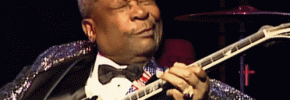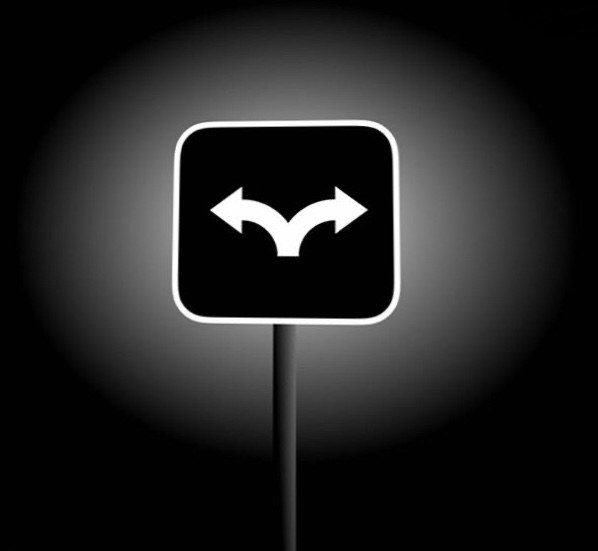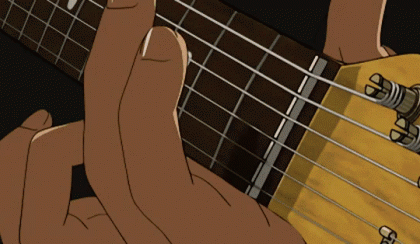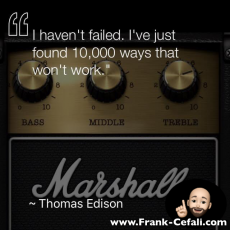What key is this?

[responsivevoice_button]
Question:
What key is Bb-Gm-F?
Answer:
Could be a :
I – vi – V or IV – ii – I
You have options if you’re just playing on your own as you can literally modulate from one key to another.
The key to knowing which ‘key’ you’re in however will depend on :
a) who else you’re playing with as well because you’ll need to decide if you’re in Bb or F Major so that you don’t clash when you play notes that are not from the same key
… or …
b) your preferred melody as the E or Eb note will tell the tune. If you feel an E note fits better in your melody then you’re probably in F major as the V chord of F major is C major with a natural E (CEG). If an Eb sounds better than you’re in Bb major as the ii chord in Bb major is C minor (CEbG).
🙂👍
Is Blues a I-IV-V or V-V-V?

[responsivevoice_button]
Blues has always been considered to be ‘simple’ to play yet it’s still not always done correctly. In fact, if the bass player and guitarist would both understand the same logic it would take the band to the next level.
It’s a simple I-IV-V when it’s just plain major chords and yes you can just improvise with a major/blues pentatonic or major scale over those chords however with that info alone you would never know that it’s a blues rhythm unless someone actually says it is or until you hear the rhythm itself. As with any style, the rhythm makes the style. There are other factors of course but the rhythm will determine if a set of chords are to be played with a blues shuffle, a reggae beat, a jazzy syncopated rhythm or any other rhythm.
When it comes to a standard 12-bar blues progression however, converting these chords to V7 chords gives you at least 3 more keys to pivot to and to create interesting yet familiar blues lines.
This is pretty much the doorway to jazz btw … or at least to play blues much better.
Jazz is a different rhythm, and ii-V-I progressions modulating all over the the place! 😂 👍
Monday Motivation
Are modes simply scales?

[responsivevoice_button]
Not at all! When discussing modes it is very important to differentiate between a scale and a mode. Scales can theoretically have the same names as modes as their names correspond to the scale degree they represent however you can theoretically play a Mixolydian scale (or scale beginning on the 5th scale degree) while actually playing in any other mode (such as Locrian as an example). You can play a Lydian scale while still being in a Dorian mode.
You can use a blues scale in a metal song yet you’re still not playing the blues itself just as you can play a whole tone scale over a blues rhythm and call it blues.

A scale is simply a set of steps or a pattern of notes and the scale you might choose can be simply a preference you might have over another scale due to personal preference or because it is preferred for a specific technique.
A mode however consists of a set of chords, usually a IV and V chord (or a substitution) and repeating tonal center which results in a specific feeling, mood, style … or mode. The difference with a style such as blues or reggae might include the actual rhythm itself as you can play in Dorian while also having a reggae rhythm. And of course the various intricacies of reggae, blues, disco, classical etc (rhythm, tempo, attitude, lyrical content, common techniques, licks, tricks and passages) make the piece much more complete.

Modes are styles or fashion and relate more to a mood than a rhythm.
As for the rules:
The ‘rules’ usually only matter if you are trying to reproduce music from a specific time period or style because there are specific things that composers did in a specific period that was not done at a different time. Therefore to reproduce baroque music you have to follow that specific rule set to do it justice for example. If you are composing music and just want to be creative, you do ‘you’ and hopefully someone will explain it later.
Theory is however a set of tools to facilitate your creativity and to communicate with other musicians, as we’re doing here. 😎👍
The ‘practical’ or ‘theoretical’ path?

[responsivevoice_button]
Learning to play music (like anything else) consists of both a practical part as well as a theoretical part. The practical path helps develop your physical ability to play an instrument while the theoretical path helps develop your knowledge about music and the instrument. Both are important.
‘Theoretically’ you can simply learn the ‘theoretical’ information as this would allow you to teach theory. You don’t ever really need to play an instrument as ‘theory’ is a skill in itself (as is teaching). That being said, most if not all musicians actually want to play an instrument and having the ability to play an instrument (at any level of ability) will definitely add to your interest in learning theory.
The reverse is also true as you can learn to play the instrument without the theoretical knowledge however your progress will be decreased as ‘no theoretical knowledge’ will inhibit your ability to communicate with other musicians and will simply make it that much more difficult to progress since it would be comparable to building a house without blueprints or tools.
Monday Motivation
Are chords enough to determine a key?

[responsivevoice_button]
Sometimes chords are enough to understand what key a song is in however it’s not always the case.
To get a complete picture or to instruct musicians who might be attempting to play a song you’ve written it’s important to understand some theory so that you can accurately describe what you would like your music to sound like as well as to interpret ‘instructions’ from other composers correctly.
Theory is a good toolbox of things we can use to build an idea however it is also a language used to explain or describe something to someone after it has been created. The creator/composer may not necessarily know the theory behind what they’ve created as they may have simply played whatever sounded good. We however, use theory to analyze, discuss and recreate what they’ve done.
I’ll say that while it’s pretty safe to play either C major or A minor scales over the following progression :
| C . . . | Am . . . | F . . . | G . . . |
The composer could throw in a twist and say that the Am is meant to be a temporary modulation to a ii chord in the key of G Major. It’s odd but not necessarily incorrect if it was created that way. That would be an important instruction to include in the chart.
If you love playing, why not also learn the language of the instrument so that you can communicate successfully with other musicians!
Rock on! 😎👍
Modal misconception

[responsivevoice_button]
Modes are often confused with the scale patterns. Modes are actually ‘styles’ or ‘moods’. The patterns of the scales themselves are just patterns. For example you might call the 5th scale in a major scale ‘Mixolydian’ because it IS the 5th scale/pattern in a major key however you could theoretically be playing a G Mixolydian ’scale’ or ‘pattern’ while the song could actually be in the A Dorian mode.
The style/mood is still Dorian even though you are playing a 5th position scale, a pentatonic scale, or even just one note.
Mode = Style/Mood. Pattern = Scale.
When I first realized this… it all made sense to me. I hope it helps you as well. 😎👍



